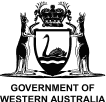Westport has partnered with the Western Australian Marine Science Institution (WAMSI) to deliver the $13.5 million WAMSI-Westport Marine Science Program. This 3-year program is developing the latest data, information and modelling on the complex environmental systems and community values associated with Cockburn Sound.
Project 7.2a: Hearing sensitivity of Australian sea lions
Research theme: Noise
Researchers: C Wei, C Erbe
Publication date: July 2024
Understanding hearing sensitivities of Australian sea lions:
Australian sea lions are pinnipeds, meaning ‘eared’ seals, and the only sea lion species endemic to Australia, living along the Western Australian and South Australian coastlines and nearby islands.
Unique from other sea lion species around the world, they are genetically unique within each of their local colonies. Male sea lions spend much of their time at sea. In the Perth metropolitan area, they inhabit Carnac and Seal islands as places to rest in between feeding and foraging, before heading north each year to Jurien during mating season.
Underwater noise from marine activities is an enduring worldwide issue, with concerns about how it impacts marine animals.
This study was commissioned to bridge the knowledge gap on the hearing sensitivities of Australian sea lions, with the intent of understanding what impact human-made noise, such as vessels movements or port construction and operations as proposed in Kwinana by Westport, may have on these sea lion communities.
Given the difficulty in testing the hearing of an animal in the wild, the study used a world-first technique to assess hearing in sea lions. Using CT imaging of a deceased Australian sea lion, along with 3D modelling, the biological hearing structures of sea lions were mapped. This model was then used to test and understand potential hearing capabilities, ranges and sensitivities.
This method is currently the only way to predict the range and frequencies that may be heard by Australian sea lions. This makes it highly valuable for ongoing marine protection and conservation activities for sea lions in Australia, as well as adding to the body of international information around sea lions.
What the report found:
- The predicted audiograms showed comparable results with the existing data of California sea lions and Steller sea lions, suggesting similar hearing capabilities among the sea lion species.
- The results indicated that Australian sea lions can hear sounds from various anthropogenic sources, such as vessels, pile driving, and seismic surveys.
How Westport will use the report:
This study has resulted in the development of a new method to inform and guide Westport’s environmental management practices around noise during development of the port, but also during port operations.
The tool will also be valuable to other marine research and conservation organisations in Australia and internationally, contributing new and practical insights to the body of knowledge about Australian sea lions, and the wider sea lion species.
You can read the full report here.





